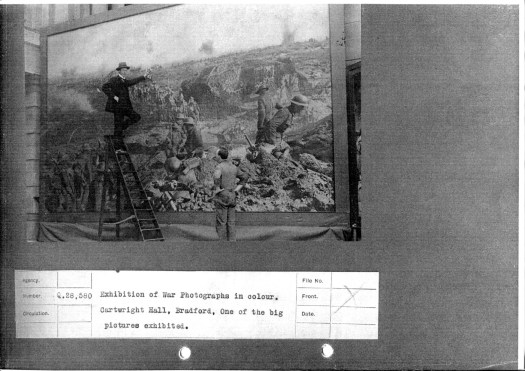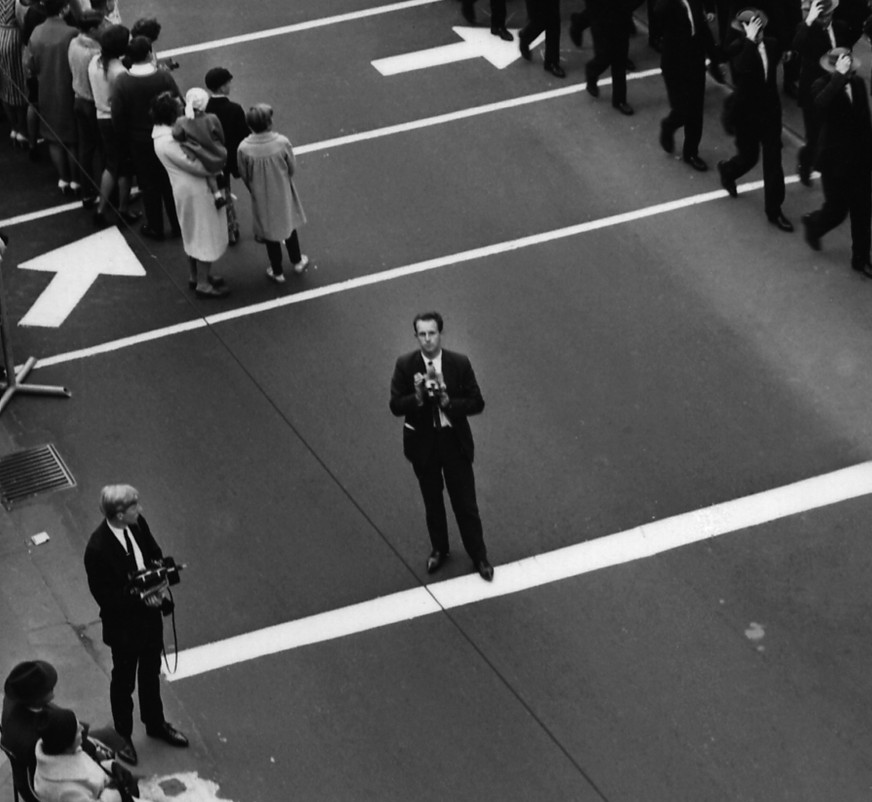I started to complain about Peter Jackson’s commission from the Imperial War Museum to colourise their archival war footage when I first heard about it earlier this year, and now I’ve actually seen the result, ‘They Shall Not Grow Old’, I’ve decided to keep on complaining. This, despite two moments in his feature length film about the experience of English men at the Western Front which do truly take the breath away.
Jackson bookends his VFX historical concoction with two extended sequences of ‘authentic’ black and white footage complete with scratches, hair in the gate, and even the clattering sound of an old film projector. About half an hour into the film, at the moment in the film’s narrative when the men arrive at the Front we, the audience, see the ‘archival’ film magically transition to full colour, correct speed, and full cineplex-quality Dolby sound. To Jackson’s credit it is a truly astonishing, and moving, moment. We are exiting History and entering Experience. After about another hour, when the men have won the War, we transition again, back home to jerky black and white, from Experience back to mere History.
These moments have roots deep in the history of media. In the 1890s many people saw their first kinematograph film through a hand cranked attachment placed on the front of a magic lantern. Canny operators would hold the first frame of their ninety second filmstrip in the gate so the audience thought they were looking at a standard glass magic lantern slide, then they would begin to crank the image into lifelike animation. This moment of phenomenological wonder wrought by drawing attention to the very apparatus of representation itself has been rehearsed frequently since. Perhaps most pertinent to Jackson’s film is the transition from black and white to colour, at about the same narrative points, in ‘The Wizard of Oz’, where the film transitions from the familiar Hollywood black and white to the new Technicolor. We’re not in Kansas anymore in ‘The Wizard of Oz’, just as we’re not in Documentary anymore in ‘They Shall Not Grow Old’.
These two moments are the film’s triumph, and all the talk has rightly been about the creation of lived experience from supposedly inert archival material — the lip reading, the stretched frame rate, the image sharpening, the 3D, and so on. So it is interesting that many of these ‘effects’, so lauded for their technical novelty today, were in fact in play before the War itself had even ended.

A giant composite mural coloured with aerograph and oil stick on dispaly c1918, from Imperial War Museum archive.
Jackson composites separate archival images together into the one frame, he passes off footage shot of training exercises as actual battles, and he closely edits together images shot far apart to make it seem as though we are seeing one action, one dramatic moment. I’m not going to be churlish, that’s fine. In fact it was being done in 1918, even before the Armistice, by the photographers Ivor Castle and Frank Hurley who worked for the Canadian, British and Australian propaganda units. They did it for a series of giant collages and hand coloured murals made for exhibitions in the UK during 1918. The only VFX Jackson has in his arsenal which Castle and Hurley didn’t have is the loop. And he uses the loop to dilate time like the master he is. In his film men look over their shoulder with impending dread, or stroke the necks of dogs with PTSD distraction, for a sublime, looped, eternity.
The fact that the War was actually being commemorated before it had even ended is only one of the about five billion other inconvenient truths about the War which Jackson’s film has to ignore in order to sustain itself. The film might be about a male English soldier’s experience, but surely we can handle more complexity than the Joseph Cambellesque narrative arc of: we didn’t know what we were getting into, it was an industrial hell, we had a battle where we found reserves of Edwardian heroism we didn’t know we had, we won that battle, we returned home and nobody understood us.
That this is a story from the cineplex, not reality, is betrayed by the fact that in the frenzied thick of its digital editing of the battle sequence the film doesn’t distinguish between photographic imagery and popular graphic imagery derived from Boy’s Own propaganda. True, there is virtually no imagery directly from WW1 battles, so Jackson had a problem. A film which used the same footage as Jackson’s, Charles Urban’s ‘The Battle of the Somme’, shown in London in 1916 (two years before the Armistice) to bring the reality of trench warfare home to complacent UK audiences, had the same problem, and also had to use footage of training exercises to stand in for actual battles. And perhaps Jackson was also trying to make the point that for these brief moments the young men temporarily entered the mythology of war under which they had enlisted, but even if he is trying to make this jingoistic point, is it is lost in the ontological muddling.
The only thing masking the narrative banality which is at the heart of Jackson’s film, and which it cannot rise above, is the voices of the returned soldiers which drive the soundtrack. They also have been been conjured from the archive of oral history, but come through, along with all their distinct and distant accents, as clear as a bell. Without those voices, Jackson’s VFX would bleach to nothing.
Their voices, and their dental work. In 2018 nobody can exit the film without wondering at the rank tombstone teeth of the soldiers. Thank God Jackson didn’t give them digital orthodontics. Those crumbling teeth stoutly defend the truths of history in the face of Jackson attempts to conjure the cinematic effects of experience.

Thanks for this, Martyn. Very nice.
LikeLike
Hi Martyn,
Here you go FILM WAR OFFICE OFFICIAL TOPICAL BUDGET 340-1 (IWM 681a):
https://www.iwm.org.uk/collections/item/object/1060023238
It took quite a bit of searching, but the source image for ‘Dreadnoughts of the Battlefield’ is also here (ref: Q 6459):
https://www.iwm.org.uk/collections/item/object/205215468
It’s interesting that we talk about TSNGO and use the same example to highlight the filmic/photographic precursors and historical continuity of Jackson’s approach.
Best wishes,
Matt
LikeLike
Thanks Matt, really interesting.
LikeLike
I love the newsreel film from 1918 of the aerograph in action on the same John Warwick Brooke photograph displayed at the Grafton. You can see them adding
plumes of smoke and highlights as they work on the image.
LikeLike
Hey Matt, That’s really interesting, can the newsreel been seen anywhere? Thanks for your comment.
LikeLike